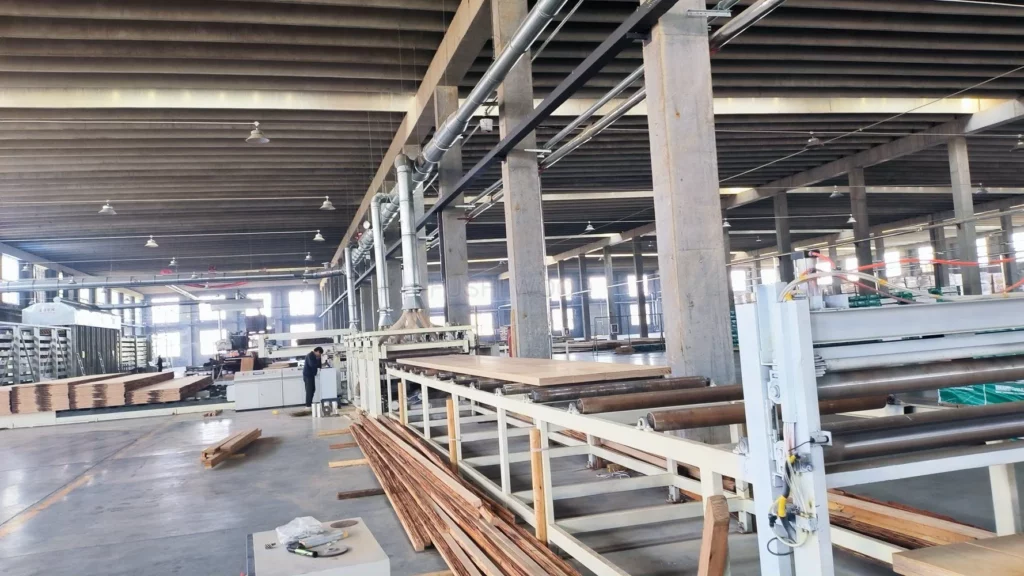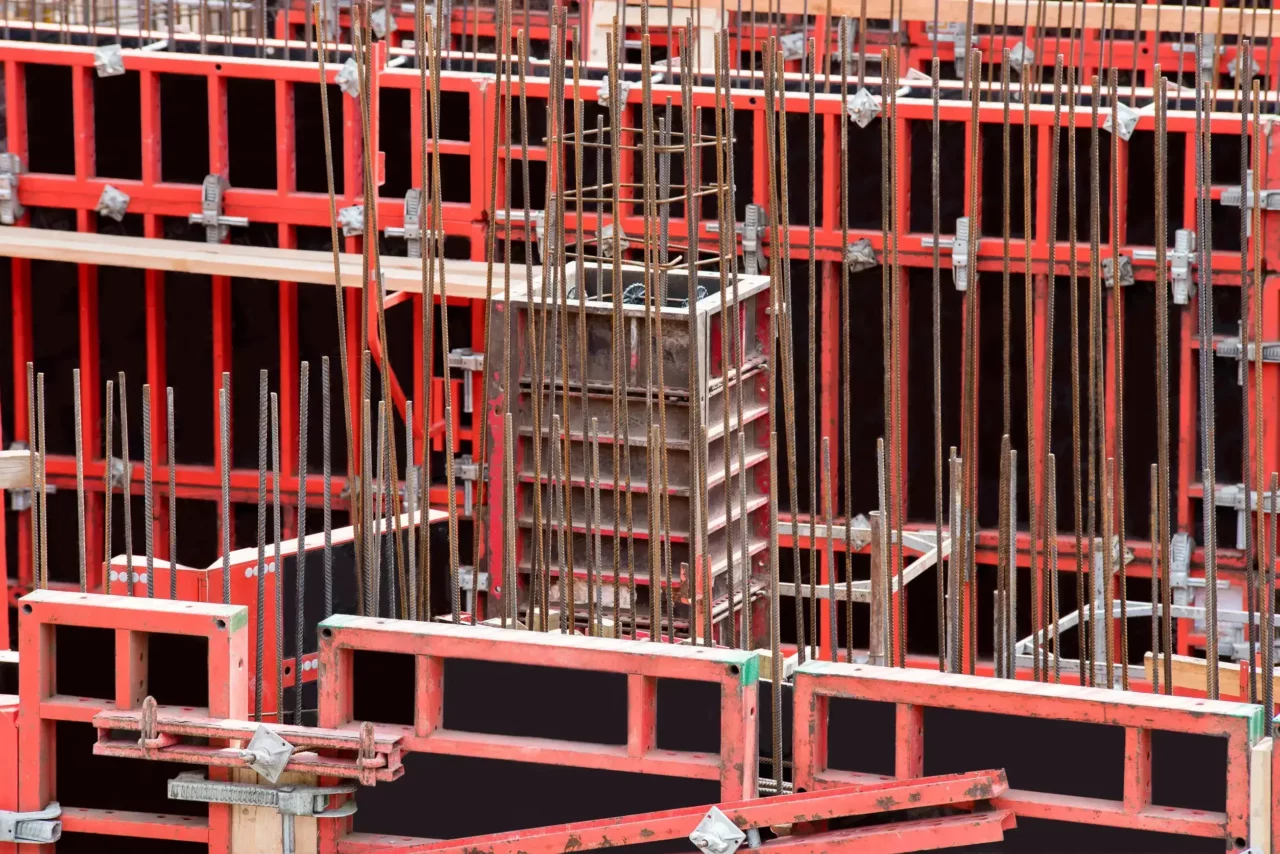Laminated Veneer Lumber (LVL) formwork has gained recognition for its sustainability and environmental benefits in the construction industry. This versatile material is widely used as a temporary support structure during concrete casting. Understanding LVL formwork, its role in sustainable construction, and the environmental advantages it offers are crucial for architects, engineers, and contractors aiming to minimize their projects’ carbon footprint and conserve natural resources.
Understanding LVL Formwork
Definition and Basics of LVL Formwork
LVL formwork refers to the temporary mold and support system used to shape concrete in construction projects. It is made by binding thin layers of wood veneers together with adhesive, resulting in a high-strength, dimensionally stable material. LVL formwork can be customized to fit various concrete shapes and sizes, making it suitable for a wide range of applications.
LVL formwork is a popular choice in the construction industry due to its versatility and durability. Its high strength-to-weight ratio allows for easier handling and installation on job sites. Additionally, the smooth surface of LVL formwork results in a superior concrete finish, reducing the need for extensive surface treatments.

The Manufacturing Process of LVL Formwork
The manufacturing process of LVL formwork involves peeling logs into veneer sheets, which are then dried and glued together using heat and pressure. By using advanced adhesives with low formaldehyde emissions, LVL manufacturers can ensure eco-friendly production methods. Additionally, the resulting product has improved mechanical properties compared to traditional timber formwork, making it more durable and resistant to warping or splitting.
Quality control is a crucial aspect of LVL formwork production to ensure consistency and reliability. Manufacturers conduct rigorous testing on raw materials and finished products to meet industry standards and regulations. This attention to detail guarantees that LVL formwork maintains its structural integrity and performance under varying construction conditions, providing long-lasting support for concrete placement. You can visit https://abrahamshouse.org/safety-protocols-for-handling-lvl-formwork-on-construction-sites to get about safety protocols for handling LVL formwork on construction sites.
The Role of LVL Formwork in Sustainable Construction
LVL formwork offers several key benefits that contribute to sustainable construction practices:
Energy Efficiency of LVL Formwork
Energy efficiency is a critical aspect of sustainable construction. LVL formwork exhibits good thermal insulation properties, reducing the energy required for temperature regulation during the concrete curing process. With LVL formwork, the need for additional insulation materials is minimized, further reducing energy consumption throughout the construction phase.
Waste Reduction Capabilities
Minimizing construction waste is essential for sustainable building practices. LVL formwork is designed for reusability, which significantly reduces the amount of waste generated during concrete casting. Additionally, LVL formwork can be easily disassembled and stored, making it suitable for multiple projects and reducing the demand for new formwork materials.
Longevity and Durability
Another key advantage of LVL formwork is its longevity and durability. Laminated veneer lumber (LVL) is known for its strength and resistance to warping or bending, ensuring that the formwork maintains its shape and structural integrity over multiple uses. This longevity not only reduces the need for frequent replacements but also contributes to cost savings and resource efficiency in the long run.
Environmental Impact of LVL Production
It is important to consider the environmental impact of the materials used in construction. LVL is often manufactured from sustainably sourced timber, ensuring that the production process has minimal negative effects on the environment. By choosing LVL formwork, construction projects can reduce their carbon footprint and promote responsible forestry practices.
Environmental Advantages of LVL Formwork
LVL formwork offers notable environmental advantages over conventional formwork materials:
Reduction of Carbon Footprint
Reducing carbon emissions is a crucial step towards achieving sustainable construction goals. LVL formwork is made from sustainably sourced wood veneers, which act as a carbon sink during their growth. When compared to carbon-intensive materials like steel or aluminum, LVL formwork has a significantly lower carbon footprint throughout its lifecycle.
Moreover, the production process of LVL formwork involves minimal energy consumption, further contributing to its eco-friendly profile. This energy efficiency not only reduces greenhouse gas emissions but also helps in lowering the overall environmental impact of construction projects.
Conservation of Natural Resources
By utilizing LVL formwork, valuable timber resources are conserved. The manufacturing process of LVL formwork requires considerably less timber compared to traditional timber formwork, reducing the pressure on forests and promoting responsible forestry practices. Additionally, LVL formwork’s reusability further decreases the demand for timber resources.
Furthermore, the durability of LVL formwork enhances its sustainability by extending its lifespan and reducing the frequency of replacements. This longevity not only saves resources but also minimizes waste generation, making it a preferred choice for environmentally conscious construction projects.
Comparing LVL Formwork to Traditional Methods
When weighing the advantages of LVL formwork, its cost and time efficiency, as well as durability and longevity, become apparent:
Cost and Time Efficiency
LVL formwork provides a cost-effective solution due to its reusable nature. The upfront investment in LVL formwork may be higher than traditional formwork materials; however, the savings achieved through its reusability and reduced waste outweigh the initial costs. Additionally, LVL formwork’s quick installation process saves valuable time during construction, leading to overall project cost reduction.

Durability and Longevity
LVL formwork’s high structural strength and dimensional stability ensure prolonged use across multiple construction projects. Unlike traditional timber formwork, LVL formwork is less susceptible to warping, swelling, or splitting. This durability reduces the need for frequent replacements and ensures a longer lifespan for the formwork system, reducing material consumption and waste generation over time.
Furthermore, the smooth surface of LVL formwork results in a high-quality finish on concrete structures, reducing the need for additional finishing work and enhancing the aesthetic appeal of the final construction. This can lead to cost savings in terms of labor and materials for finishing touches, making LVL formwork a comprehensive solution for construction projects aiming for both efficiency and visual appeal.
Moreover, LVL formwork’s versatility allows for complex architectural designs and shapes to be easily achieved, providing architects and designers with greater creative freedom in their projects. The ability of LVL formwork to mold into various shapes and sizes without compromising structural integrity makes it a preferred choice for projects that require unique and intricate concrete forms, pushing the boundaries of traditional construction methods.
Future Perspectives on LVL Formwork
The future of LVL formwork lies in continuous innovation and addressing potential challenges:
Innovations in LVL Formwork Technology
Ongoing research and development are focused on enhancing the properties of LVL formwork. Innovations in adhesive technology, surface treatments, and reinforcement techniques are resulting in even stronger and more sustainable LVL formwork solutions. These advancements will further improve the environmental performance and durability of this construction material.
Potential Challenges and Solutions
While LVL formwork offers numerous benefits, challenges such as proper disposal and recycling of end-of-life formwork need to be addressed. Developing efficient recycling programs and exploring alternative disposal methods, such as energy recovery, can minimize environmental impacts. Collaboration amongst stakeholders in the construction industry is crucial to finding sustainable solutions for these challenges.
Exploring New Applications for LVL Formwork
As the construction industry evolves, so does the potential for LVL formwork to be used in new and innovative ways. Architects and engineers are constantly pushing the boundaries of design, and LVL formwork can play a significant role in bringing these visions to life. From complex curved structures to sustainable modular buildings, the versatility of LVL formwork opens up a world of possibilities for creative and sustainable construction projects.
The Importance of Training and Education
With the continuous advancements in LVL formwork technology, it is crucial to invest in training and education for construction professionals. Providing comprehensive knowledge and skills on the proper use and maintenance of LVL formwork ensures that its full potential is realized on every project. By promoting best practices and staying up-to-date with the latest developments, construction teams can maximize the benefits of LVL formwork and contribute to sustainable construction practices.
In conclusion, LVL formwork provides sustainability and environmental benefits throughout its lifecycle. Its energy efficiency, waste reduction capabilities, and environmental advantages contribute to sustainable construction practices. When compared to traditional formwork methods, LVL formwork excels in cost and time efficiency, as well as durability and longevity. Continued innovations, exploring new applications, and investing in training and education will further enhance the role of LVL formwork in sustainable construction, making it a valuable solution for environmentally conscious projects.

Leave a Reply